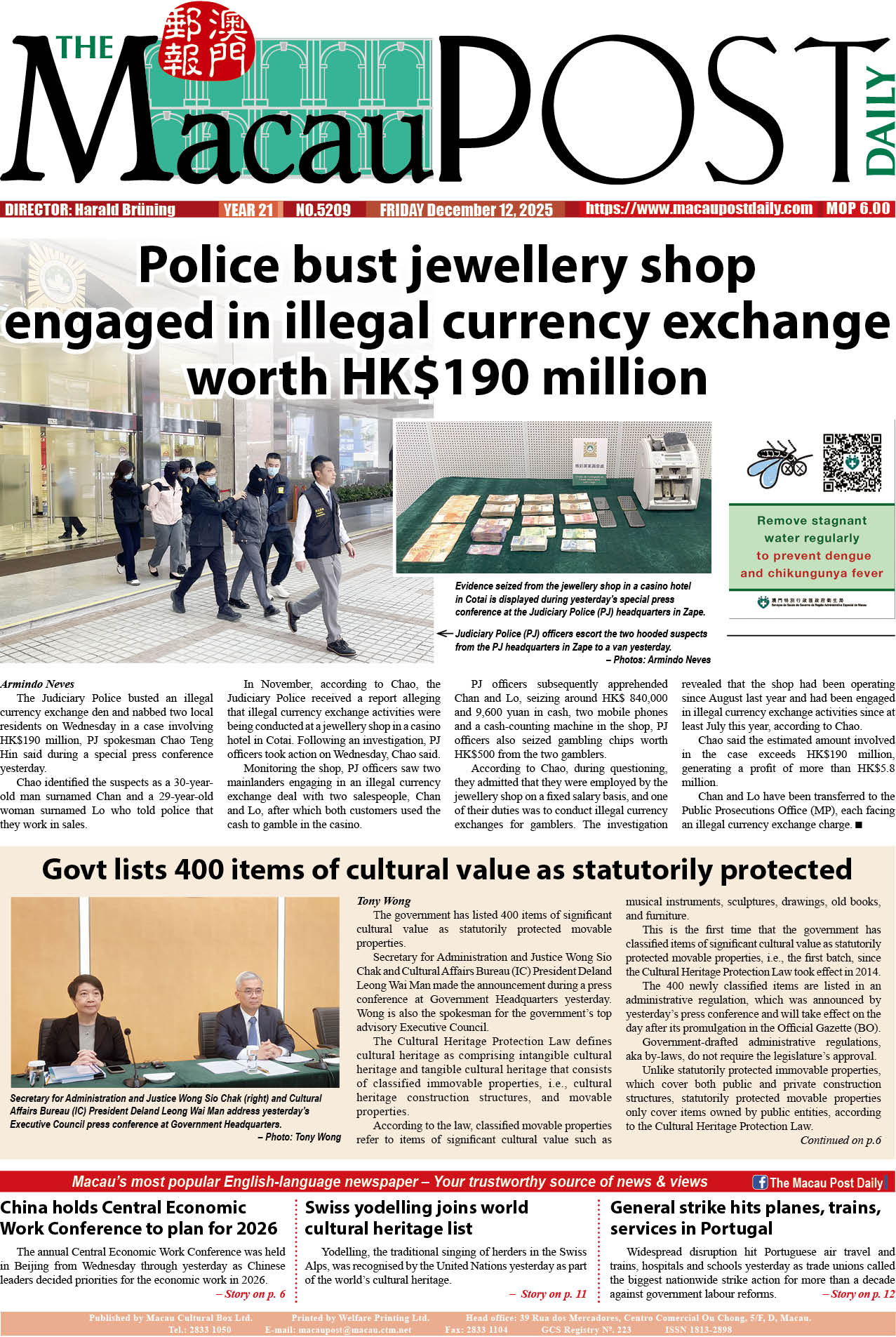Es.tab.lish.ment is the title of Portuguese artist Pedro Pascoinho’s first Asian exhibition, organised by d’As Entranhas Macau – Cultural Association, at the Orient Foundation’s Casa Garden until January 6.
While the title appears to be somewhat political, the paintings are of Western European images and cultural icons that have been deconstructed and reimaged.
MPD Weekender spoke to Pascoinho before the exhibition opened earlier this month about his concepts and where he gets his inspiration from.
Born in 1972 in Figueira da Foz, Pascoinho said that he had always liked to draw and had been drawing “since I was a kid of about six or seven.”
He added, “I used to work in a gallery and learnt by observation, drawing has always followed me and I had my first exhibition in 1992.”
15th century fascination
Pascoinho insists that his paintings are not political, adding that he uses models and structures or architecture. He said he first exhibited Es.tab.lish.ment at Gallery Five in Cascais’s Citadel Art District in 2014, a series of paintings with red as the primary colour, pointing out that the series started as a deconstruction of the concept before beginning to paint.
“I am fascinated with 15th century art and red is the colour associated with knights and cardinals. It is also associated with the forbidden and blood. It is to establish a barrier as it was used at the beginning of the Baroque,” Pascoinho continued.
When told that in Chinese culture red is associated with good luck, Pascoinho said, “It will be interesting to see how people interpret the paintings. I leave the concept open, the narrative is about what is happening, messages don’t exist, the idea is to react to them without thinking.”
He went on to say, “I am curious about people’s reaction here as I don’t know how they will react. It will be interesting to see their reactions.”
He added, “I am a great fan of Buster Keaton films, in which he uses people as props, so I use a person or a book as a prop, like a contained movie.”
Image appropriation
Talking about the Es.tab.lish.ment collection, Pascoinho said that he had first shown the series in 2014 and liked that period of his work so “I did some other paintings to add to the collection to bring to Macau,” he added.
Pascoinho said that as his work is as an appropriation of images, he uses magazines from the 1940s and 50s so that he has models using them in his paintings and the images appear as a continuity.
“I have a pile of these old magazines and I go through them when thinking about a series and when I have enough images I reuse or reshape them”, he said.
Most of his work is oil on paper, “I started this series as oil on canvas but I have a problem with working on canvas,” he said.
“I use archives on the internet. Painting is like writing a book, you have to find a way of expressing yourself,” he said.
There are also a few pencil drawings in the exhibition.
Historic repetition
Pascoinho said, “The thinking in the 15th century is the same as today. When you think of history, it is like we haven’t learnt anything, there are points of repetition, there are the same concerns in life in the 15th century as there are today, food, family, housing… humanity is developing but nothing much changes. Music, space and paintings are all still in existence.”
According to a statement by Frederica Jordão, the curator of the exhibition, in Es.tab.lish.ment architectural elements such as scale or structure are more successful at staging a drama, as the characters are hypnotised, sceptical or doped, cheerful iconoclasts, appearing as things and as landscapes, deforming in their eyes while being impassive, and are victims of change in them. An eminently cinematographic narrative still presents a dramatic tension brought on by decontextualisation, but the concept is clearer, almost universal, and the resource is a symbol – a book, a robe – that seems to want a designation of the thing itself.
The exhibition is on at Casa Garden at 13, Praça Luis de Camões until January 6. The exhibition is open from Tuesdays to Sundays 10 a.m. to 7 p.m. Admission is free.
Pedro Pascoinho poses with two of his paintings in the Orient Foundation’s Casa Garden earlier this month before his exhibition began. Photo: Lesley Wells






